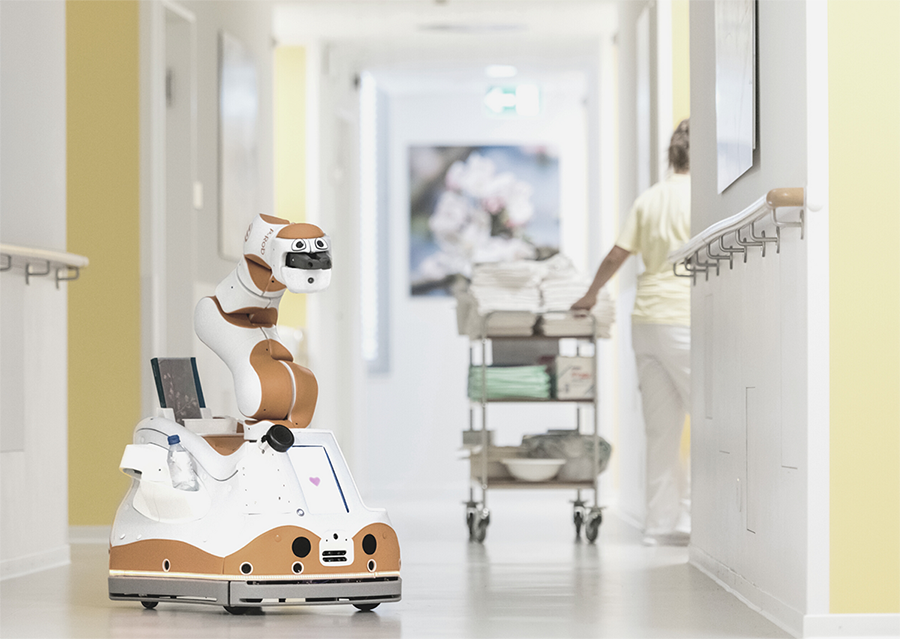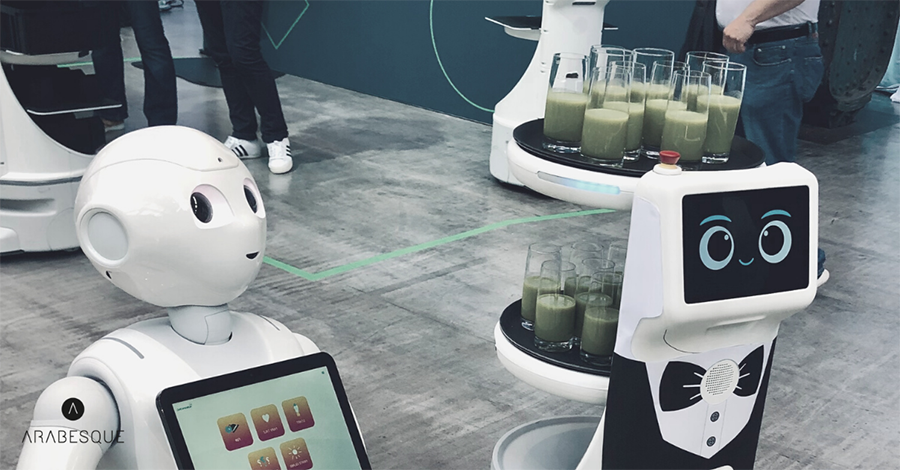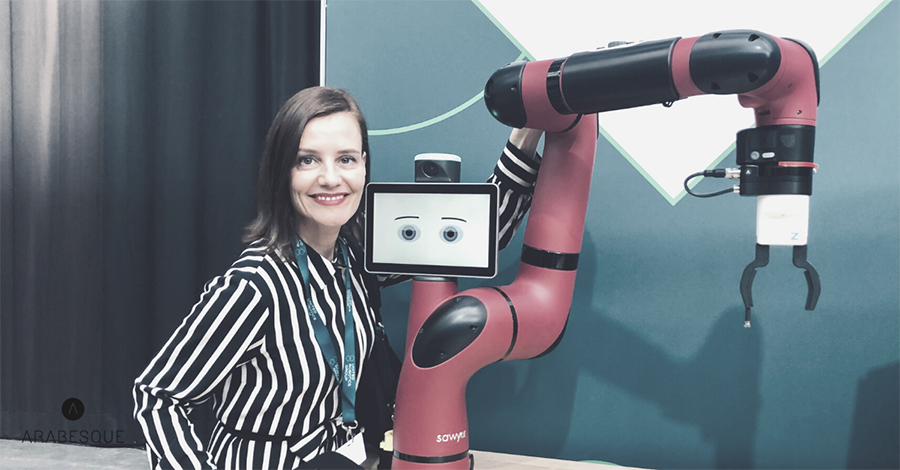HealthManagement, Volume 23 - Issue 5, 2023
In today’s evolving workplace, robots and AI are reshaping jobs. While job displacement concerns exist, there’s a remarkable aspect: the potential for passionate employees. Automation of repetitive tasks not only enhances efficiency but also boosts job satisfaction. The benefits include positive interactions, happy employees, and more personalised care. Challenges include readiness for change and clear objectives. Human-robot collaboration empowers employees, allowing them to focus on meaningful tasks.
Key points
- Robots and AI are transforming the workplace by automating repetitive tasks, freeing employees to focus on more creative and fulfilling aspects of their jobs.
- Statistics show exponential growth in robotics and AI, particularly in healthcare. As automation unlocks hidden passions, it transforms work into a source of fulfilment, driving innovation and success.
- The benefits of automation are not only empowered humans but also augmented efficiency.
- Automation allows employees to explore and pursue their passions within the workplace, leading to greater job satisfaction and innovation.
- Robots and AI alleviate labour shortages, streamline everyday tasks, and positively impact factors such as positive human-machine interaction.
- Contrary to the doom-and-gloom narratives surrounding automation, robots and AI are poised to unleash a wave of passion-driven employees in the workplace.
How Automation Can Transform People
In today’s rapidly evolving workplace, the integration of robotics and artificial intelligence (AI) has sparked numerous discussions about their impact on jobs and the workforce. While concerns about job displacement are often discussed, there is an intriguing and less explored aspect of this technological revolution: the potential for passion-driven employees. Contrary to the belief that machines will replace human workers entirely, robots and AI can contribute to a more passionate, engaged, and fulfilled workforce. This article delves into how this transformation is occurring and what it means for the future of work.
Automating Repetitive Tasks
Robots and AI are revolutionising the workplace by taking over simple, repetitive tasks. These tasks, often characterised by monotony, can be a major source of employee disengagement and dissatisfaction. By automating these duties, employees have the opportunity to focus on more creative, fulfilling, and intellectually stimulating aspects of their jobs.
Benefits
Robots and AI can empower humans by augmenting their capabilities and, thus, their quality of life. Not only that, but they are also typically alleviating labour shortages, making jobs more attractive and streamlining everyday tasks.


Soft Factors
As robots and AI become more integrated into the workforce, the soft factors come to the forefront:
- positive human-machine interaction
- happy employees
- happy customers, which will reflect on the employees.
- more time for personalised patient care
- higher job satisfaction and fewer burnouts
The key to successful automation with robotics and artificial intelligence is a human-centred approach. We will talk about this later in the article.
Efficiency Factors
In general, robots and AI enhance staff efficiency. Some of the factors are:
- reduced workload by automated routine tasks
- effective processes
- better and more informative analysis
- the ability to apply more artificial intelligence to make processes even more effective.
- RaaS, robot as a service, for a cost-effective, agile planning of automation
- job profiles with more interesting tasks, better-utilised skills and consequently, a greater benefit for the company.
In patient care, for example, robots handle routine tasks such as activation, logistics or reporting, leaving healthcare staff more time for patients, innovation and quality control. This shift from routine tasks to higher-value activities enhances job satisfaction and taps into employees’ passions for innovation and creativity.
Enhancing Decision-Making
AI algorithms are becoming increasingly adept at analysing vast amounts of data and providing valuable insights. This capability is transforming decision-making processes across various industries, including the healthcare industry. Instead of spending hours sifting through data, employees can rely on AI-driven analytics to inform their choices. This shift allows employees to focus on different aspects of their roles, using their judgment, expertise, and creativity to make informed decisions. It has the potential to improve the quality of care, increase efficiency and reduce costs in healthcare with robotics and AI.
Challenges
In the ongoing transformation of our workplaces, automation and the collaboration of human and machine have become defining features of this new era. However, this journey is not without its intricacies and obstacles. As we delve into the dynamic landscape of automation, it becomes evident that the harmonious coexistence of humans and robots brings forth a set of challenges that necessitate keen attention and strategic solutions. These challenges are not to be viewed as roadblocks but rather as opportunities for growth and innovation and they are:
- People must be ready and open to change.
- A positive mindset, passion and a sense of purpose are prerequisites for growth.
- A clear objective for the use of robotics and AI.
- A well-designed human-centred interaction.
- In-depth information and training for the staff is mandatory.
- An awareness of the application purpose of the different types of robots, for example logistics, social interaction, cleaning, and therapy.

Human-Robot Collaboration
Robots are working hand-in-hand with people. How so? These robots are not industrial robots but service robots. Service robots are designed to work alongside humans, complementing their skills and capabilities.
They don’t replace humans. They simply allow us to focus on more meaningful and higher-value tasks by automating the simple and repetitive ones.
This collaborative approach allows employees to focus on the aspects of their jobs that require human intuition, empathy, and creativity while delegating repetitive and physically demanding tasks to robots. It fosters a sense of teamwork between humans and machines, making work more enjoyable and purpose-driven.
Healthcare organisations are using robots, some of them AI-enabled, to improve the efficiency of all kinds of processes, such as:
- efficient visitor guidance
- optimisation of hospital supply management & logistics
- health education and adherence: social robots ensure patients understand their health conditions and maintain their medication schedules, thus enhancing treatment effectiveness.
- rehabilitation aid: these robots facilitate physical and cognitive therapeutic activities, aiding patient recovery.
- boosting patient morale: social robots engage and comfort patients and uplift their spirits.
- administrative workflow: For example, doctors and other clinicians can dictate notes hands-free, giving them more face-to-face time with patients. AI computer-assisted documentation can provide clinicians with suggestions that keep medical records as thorough as possible. In the meanwhile, the AI-enabled robots also accompany the clinicians spatially.
- safer surgeries: AI-enabled robots can work around sensitive organs and tissues, reducing blood loss, infection risk and post-surgery pain.
See how this robot inspires senior citizens in an elderly home, which transformed the staff and the elderly.

Statistics
Robotics, especially service robotics, as well as AI, are in exponential growth. The International Federation of Robotics (IFR) released the World Robotics Report 2023, with insights into service robotics. According to Statista, the AI healthcare market, valued at $11 billion in 2021, is projected to be worth $187 billion in 2030. That massive increase means we will likely see considerable changes in how medical providers, hospitals, pharmaceutical and biotechnology companies, and others in the healthcare industry operate.
Unlocking Hidden Passions
As robots and AI handle routine tasks and assist with decision-making, employees have more time to explore and pursue their passions within the workplace. Whether it’s simply spending more time with patients, delving into a new project, volunteering for cross-functional teams, or engaging in community initiatives, employees are finding new ways to express themselves and connect with their work on a deeper level.
Conclusion
Contrary to the doom-and-gloom narratives surrounding automation, robots and AI are poised to unleash a wave of passion-driven employees in the workplace. Technology is transforming the nature of work by automating repetitive tasks, enhancing decision-making, promoting human-robot collaboration, and unlocking hidden passions. As organisations embrace these changes, they will find that passionate, engaged employees are more productive and more likely to drive innovation and success. Even in the very challenging healthcare sector, a goal could be to create a love brand and a place where people love to work.
Conflict of Interest
None.
















